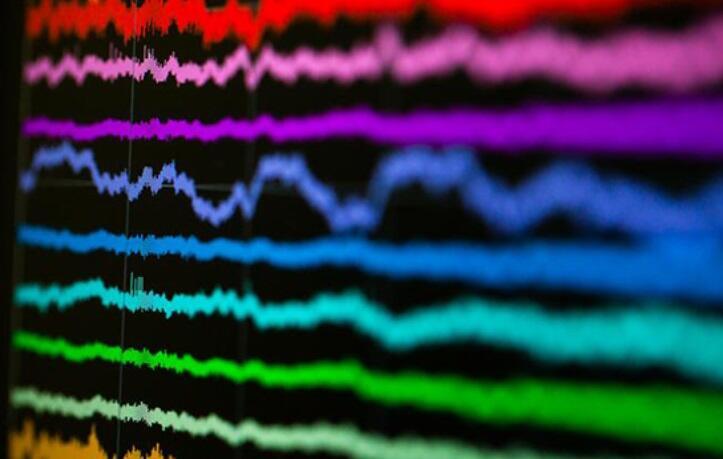When an individual is asked to judge a small number of items, they can immediately and confidently state the quantity presented to them. This rapid analysis of information is impressive, but it only works well for up to four items. Therefore, if you observe four apples, you will be able to determine their quantity promptly. However, adding another apple will increase the difficulty of quickly judging their number from a mere glance, necessitating more time to arrive at the answer.
Read more:
Basic abilities
The ability to rapidly determine the number of items appears at an early age. Studies have shown that the brains of three-month-old infants, who have not yet learned to count consciously, respond differently to varying numbers of objects.
2 View gallery


The ability to rapidly determine the number of items appears at a young age and appears to be universal. A child counts using his fingers
(Photo: Shutterstock)
Furthermore, this immediate counting appears to be an innate basic ability, transcending cultural differences. In a study involving an Amazonian tribe whose language lacks numerical terms, members of the tribe demonstrated proficiency in tasks requiring object counting. Many animals also exhibit counting abilities. Rhesus monkey, for example, managed to learn to count up to 6.
The difference in the speed of identification of a few items compared to many items led researchers to hypothesize that we use two distinct strategies for counting. Experiments examining subjects' rapid counting abilities under various conditions have yielded intriguing results. Using innovative technologies, researchers can now monitor brain activity during counting tasks, potentially obtaining deeper insights into how the brain accomplishes this task.
The Cells that count
In a new study conducted in Germany, researchers examined brain activity at an especially high resolution that allowed them to monitor individual nerve cells while the subjects performed counting tasks.
The subjects who volunteered to participate in the study were patients scheduled to undergo brain surgery for epilepsy treatment, unrelated to the experiment. Electrodes were implanted in the subjects’ brains to measure the activity of nerve cells in the temporal lobe, to help the surgeons locate the exact region to operate on. The researchers took this opportunity to experiment since this region plays an important role in the act of counting. While the electrodes documented their brain activity, the subjects were asked to look at a screen displaying randomly arranged dots and to quickly report whether the number of dots was even or odd.
In line with the known difference in the processing speed of small and large numbers, the subjects responded with high accuracy and speed when presented with four dots or fewer. However, as more dots were added, the accuracy decreased, and the reaction time increased. When examining the cell activity using the electrodes, the researchers realized that they had obtained the first real evidence that the brain indeed operates differently during the two types of counting.
2 View gallery


While the electrodes recorded their brain activity, the subjects were asked to look at a screen displaying dots and to determine whether the quantity was even or odd
(Photo: Christian Burkert/Volkswagen-Stiftung/University of Bonn)
When the subjects counted up to four items, certain populations of nerve cells responded uniquely to the number of dots on the screen. Cells that responded to two dots, for example, did not respond to one or three dots. Given this finding, the researchers speculate that the activation of nerve cells that respond to a certain number of dots reduces the activity of the cells that respond to a different number of dots, in a way that facilitates immediate and clear identification. For example, activation of a cell capable of identifying two dots would reduce the activity of a cell responding to three dots.
In contrast, cells that responded to more than four dots displayed a distinct pattern of activity: they also displayed weak responses to similar but different quantities of objects. For example, a nerve cell that responded to six dots also responded more weakly to five or seven dots. This distinction might explain to some extent the hesitation and the higher likelihood of error that characterizes the counting of many objects. This mode of brain activity is also very logical: in nature, the precise difference between large numbers is less significant for an animal, thus it does not need to invest many resources in counting in such cases. A predator following a herd of zebras, for example, might want to know if it contains 100 or 200 individuals, but will not care whether the herd contains 100 zebras or perhaps 101.
Someone is counting on you
The human brain constantly receives many stimuli from its surroundings, necessitating rapid analysis and trust in its conclusions for decision-making. Our innate ability to rapidly enumerate a small number of items is not only efficient but also requires fewer cognitive resources than we would need if we counted them gradually and consciously. Yet, the underlying mechanisms enabling this swift counting ability remain unclear.
The new study contributes to the extensive body of knowledge amassed by neuroscientists regarding the brain’s intricate operations. However, further studies are required to get to the bottom of the counting process. We hope that in the future, a better understanding of brain activity during counting could facilitate better treatments for individuals experiencing difficulties with such essential cognitive tasks.

